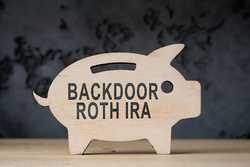5 Ways to Trade Options

Our evaluations and opinions are not influenced by our advertising relationships, but we may earn a commission from our partners’ links. This content is created by TIME Stamped, under TIME’s direction and produced in accordance with TIME’s editorial guidelines and overseen by TIME’s editorial staff. Learn more about it.
If you’re an experienced investor looking to take on a more complicated form of trading, you may have considered options trading.
While trading options can result in higher returns than investing in stocks—and has the potential to generate income and hedge a portfolio against risk—it can be very risky. Here’s what you need to know, including a step-by-step guide to trading.
Here are five steps to follow when trading options.
Before you begin trading options, it’s important to understand how it works. If you’re already familiar with the basics of stock trading, be ready to learn many new terms: calls, puts, and strike price, just to name a few.
Start by reading this guide to ensure you understand what you're buying and selling when you trade options (hint: it’s options contracts, not underlying assets like stocks and bonds). Options trading has unique, and potentially larger, risks compared to trading other types of assets. Be sure you fully know what’s at stake when you buy or sell an options contract before doing so.
Most trading platforms also have in-depth educational content on everything from options-trading basics to advanced strategies, so you can continue researching as you move on to the next steps.
Thanks to the advancement of online investing, there are ample trading platforms to choose from.
Some online options-trading platforms are beginner-friendly, while others are best suited to advanced traders. Some platforms will be fairly upfront about this—TradeStation, for example, says on its homepage that it’s best for sophisticated investors and institutions.
The cost to trade options can vary based on the platform and your trading volume. Consider the commissions and per-contract trading fees, but also other fees (such as those for inactivity or transferring funds) and whether you need to make a certain amount of trades per month or quarter to snag the more attractive trading costs. Some platforms also have tiered services with lower fees for premium offerings.
Options platforms offer different features, including risk and reward analyses, seeing what other traders buy and sell, paper trading, and more. Check out a platform’s website to see exactly what you’ll get if you choose them as your broker.
If you’re looking to trade options in the same account where you hold your long-term, diversified portfolio, you may want to opt for an investment giant like Charles Schwab or Fidelity. If you’re looking to do other types of trading—such as forex or crypto—alongside your options trading, you’ll want to find a platform that supports those offerings.
Some platforms offer free trials, which can be a good way to test a platform before committing to it.
Because options trading can be more risky and complicated than other types of trading, you must apply to be allowed to participate in options trading on the platform. The authorization process usually involves completing a questionnaire about your finances, investing experience, and goals.
There are two types of options contracts to choose from: calls and puts. More on these below but, in short, buying a call option will give you the right to buy an underlying asset at an agreed upon price if it hits the strike price by the expiration date. Buying a put option gives you the right to sell an underlying asset at an agreed upon price if it hits the strike price by the expiration date.
Choose which type of contract you want to buy or sell based on how you expect the contract's underlying asset to move in the near term. For example, if you think the price of an underlying asset may jump, it may make sense to buy a call option. That’s because you can lock in the lower price in your contract and exercise the right to buy the underlying asset if it hits the strike price, no matter how high the actual price goes.
An options contract includes a strike price, which is the price the underlying asset needs to reach for the buyer of the option to exercise their right to buy or sell it. An underlying asset's strike price and actual price determines whether an option is “in-the-money” or “out-of-the-money,” though it depends on your contract type. For example, a call option is “in-the-money” if the strike price is below the underlying asset’s price, and “out-of-the-money” if it’s above. A put option is “in-the-money” when the underlying asset’s price is lower than the strike price at the expiration date.
The expiration date represents the time frame in which the underlying asset has to increase or decrease in value to be “in-the-money” or “out-of-the-money.” The contract will expire if the expiration date passes and the underlying asset’s price doesn’t hit the strike price.
You can’t just choose the strike prices and expiration dates you want. The options matrix (also known as the options chain) lists all the option contracts available for a security, such as a specific stock.
Once you’ve chosen the contract you want to trade, you’ll tell your broker you want to execute the trade. Remember that if you’re trading an options contract, you’ll have to pay a premium.
Options trading involves buying and selling options contracts, which give one trader the right to buy or sell an underlying asset for a certain price within a certain time frame. The buyer of an options contract is not obligated to exercise it; they can let it expire. However, the options seller or “writer” must buy or sell the underlying asset if the options buyer chooses to exercise the contract.
The options buyer pays a premium to the seller, which is the cost of the options contract. The options buyer automatically gets the right to buy or sell the underlying asset if it hits a certain price, known as the “strike price.”
Trading options is more complicated than trading stocks, so it’s typically not recommended for beginners. There are a wide variety of options trading strategies, and some involve significantly more risk than others.
There are two main types of options contracts: calls and puts. Let’s look at an example of each.
A trader may buy a call option if they think the underlying asset may increase in value, but they don’t want to own it outright. Say that stock XYZ costs $25 per share, but you expect that to rise. You could buy 100 shares of the stock at $25 each for $2,500. Or you could buy an options contract giving you the right to buy those shares at the $25 price even if the stock price rises to $50. If the premium is $3 per share, your options contract would cost $300 ($3 multiplied by the 100 shares).
If the stock price rises to $50 before the expiration date outlined in your options contract, the seller has to sell the 100 shares to you for just $25 each, if you choose to exercise your option.
Put options work opposite call options, giving you the right to sell the underlying asset if it hits the strike price before the expiration date. Say stock XYZ currently costs $25 per share, but you think that will fall to $10. You could buy a put option giving you the right to still sell 100 shares of stock XYZ at $25 per share, even if their price falls.
The amount of money you need to have to trade options will vary by brokerage, with some requiring a low to no minimum to get started. That minimum can also increase depending on what level of options trading you’re planning to use.
Some platforms require you to have a margin account to trade certain levels of options, which essentially lets you borrow money from the brokerage to make your trades. This move comes with risk, and the Financial Industry Regulatory Authority (FINRA) requires you have at least $2,000 in your account to partake in margin trading.
Options trading can appeal to investors who want to profit from speculating on short-term price movements, often at a lower cost than trading stocks. Options provide leverage, meaning that a trader can pay just the cost of a premium for exposure to the stock market, instead of paying full stock prices. This type of trading can also come with a higher upside than stock trading over a short period of time, so there’s the potential for high returns in your portfolio.
Another benefit of trading options is that they can help reduce risk in your portfolio. That may seem counterintuitive since options trading itself can be risky. But, if done right, an investor can use options to hedge against falling values elsewhere in their portfolio. For example, if you hold a stock and are worried the price of that stock will plummet, you could buy an options contract that gives you the right to sell the stock at a certain price, even if that stock does in fact plummet far below its current price.
Options trading also offers much more flexibility than other types of investing, so there are a wide range of strategies traders can use to fit their various needs.
While options can fit into an investor’s portfolio, it’s important to know the risks before you dive in. For options sellers—the traders who are obligated to buy or sell an underlying asset if the buyer of the option exercises their right—there can be unlimited downsides. Say you sell an option agreeing to sell 100 shares of a stock at $100 each, even if that price falls to $50. Not only are you hoping that the option will expire without the buyer being able to exercise their right, but you’re also risking that the stock falls to $50 and then keeps falling.
The risk is smaller for a buyer in that situation, but remember that when trading options you need to be correct about both the strike price and the expiration date to benefit. If you’re not, you still have to pay a premium but don’t make a profit.
It’s also important to consider how complicated this type of trading can be. While those investing in the stock market can choose to buy and hold stocks of funds, options trading requires a more hands-on approach and an understanding of how options work and how various strategies align with your objectives. And while taking advantage of volatility is one of the main ways to benefit from this type of trading, it also requires traders to stomach the ups and downs of the financial markets.
Options trading is not suitable for all investors. Other investing strategies include individual stocks and investment funds.
When you think about investing, your mind likely jumps to the stock market. When you buy stocks, you’re buying a share of ownership in a company. You can buy shares of publicly traded companies you know—Starbucks, Nike, or Walmart, for example—as well as stocks of lesser-known, smaller companies.
In fact, financial advisors tend to recommend investing in a wide range of stocks. This strategy, known as diversification, helps ensure that if one section of your stock portfolio tanks, there are stocks of other sizes and sectors that may be able to hold steady or even increase in value.
While you can own individual stocks, buying exchange-traded funds (ETFs) and mutual funds is a way to get exposure to large numbers of stocks. This lowers your risk by ensuring not all your eggs are in one basket.
You can buy funds via the same brokerages you use to buy stocks.
Whether or not you should trade options will depend on your specific situation. Factors to consider include:
Some platforms offer paper trading, which can be a good way to get a sense of options trading before buying and selling contracts.
Options trading can be much more complicated and risky than buying and selling stocks and bonds. Make sure to do your research so you understand what trading options entails, and choose a platform that aligns with your goals and experience.
When it comes time to trade, you’ll have to determine your strategy, choose options contracts, and execute your trades.
Options tend to trade during the regular market hours: 9:30 a.m. to 4:00 p.m. ET, Monday through Friday. While options can be even more volatile than stocks, they tend to be especially right when the market opens—and though that may mean new options traders want to avoid those hours, buying and selling during high volatility is a strategy traders use to make a profit. In general, a good time to buy options is when they’re undervalued.
Minimum requirements for trading options will depend on the platform you use. However, some brokerages require a margin account to trade options, and federal regulations require you to have $2,000 in an account for margin trading.
Options trading can be profitable for any trader if done correctly. However, many financial advisors recommend that new and inexperienced investors avoid it since it is more complicated than trading stocks and can involve risks.
The information presented here is created by TIME Stamped and overseen by TIME editorial staff. To learn more, see our About Us page.



